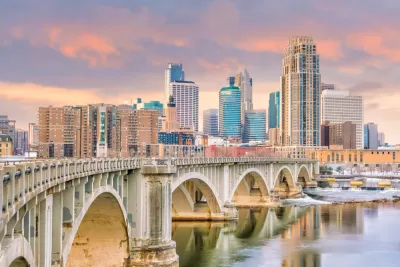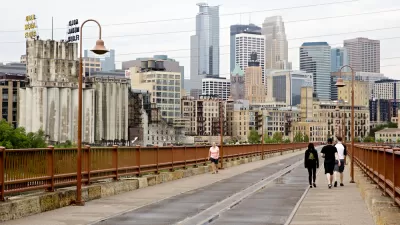Any aambitious plan will have to change on its way to adoption. The Minneapolis 2040 comprehensive plan not only kept many of its core ambitions intact through the political process, but expanded them.

Jessica Lee prepares for the likely adoption of the Minneapolis 2040 Plan, one of the most ambitious and closely watched comprehensive plans in recent memory, by tracking the changes that got it to the finish line.
Lee list six big changes made to the plan from draft to final.
- Shifting from a draft proposal to allow flourplexes on residential properties to the final version that allows fourplexes.
- Making incremental changes to the zoning maps proposed in the plan.
- Changing wording from "reducing" to "eliminating" racial disparities.
- Adding additional priority on cutting greenhouse gas emissions.
- Removing the draft proposal to end parking minimums in the entire city. "After facing complaints from some drivers, however, council members approved new language to clarify 'that demand for parking will still result in new supply being built,'" reports Lee.
- Additional incremental changes on issues like indoor plants and transportation technology.
Lee provides more details on the politics of and processes of each of these changes.
FULL STORY: All the ways the City Council changed the Minneapolis 2040 plan

Planetizen Federal Action Tracker
A weekly monitor of how Trump’s orders and actions are impacting planners and planning in America.

Maui's Vacation Rental Debate Turns Ugly
Verbal attacks, misinformation campaigns and fistfights plague a high-stakes debate to convert thousands of vacation rentals into long-term housing.

San Francisco Suspends Traffic Calming Amidst Record Deaths
Citing “a challenging fiscal landscape,” the city will cease the program on the heels of 42 traffic deaths, including 24 pedestrians.

Amtrak Rolls Out New Orleans to Alabama “Mardi Gras” Train
The new service will operate morning and evening departures between Mobile and New Orleans.

The Subversive Car-Free Guide to Trump's Great American Road Trip
Car-free ways to access Chicagoland’s best tourist attractions.

San Antonio and Austin are Fusing Into one Massive Megaregion
The region spanning the two central Texas cities is growing fast, posing challenges for local infrastructure and water supplies.
Urban Design for Planners 1: Software Tools
This six-course series explores essential urban design concepts using open source software and equips planners with the tools they need to participate fully in the urban design process.
Planning for Universal Design
Learn the tools for implementing Universal Design in planning regulations.
Heyer Gruel & Associates PA
JM Goldson LLC
Custer County Colorado
City of Camden Redevelopment Agency
City of Astoria
Transportation Research & Education Center (TREC) at Portland State University
Jefferson Parish Government
Camden Redevelopment Agency
City of Claremont





























